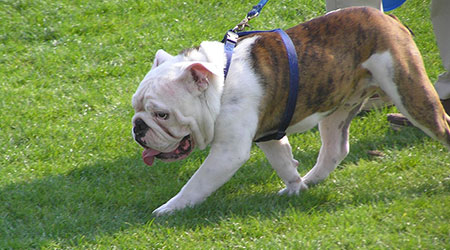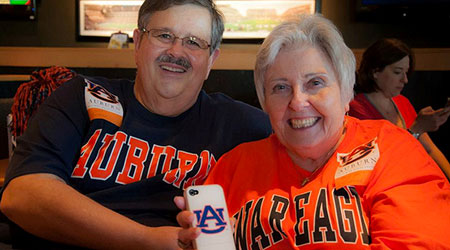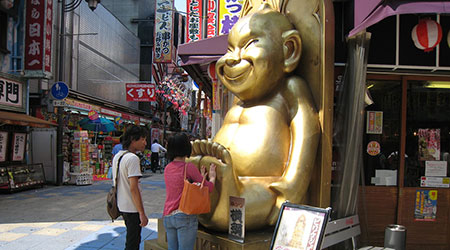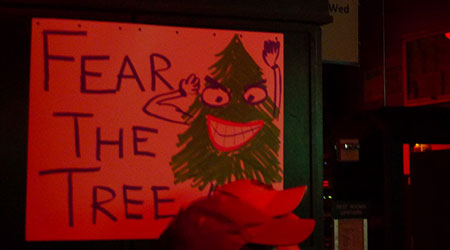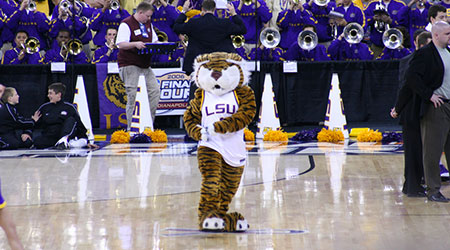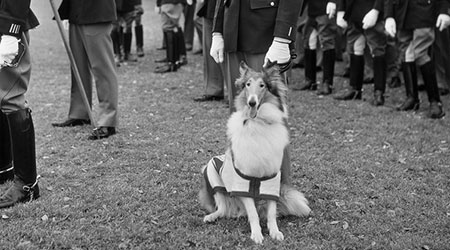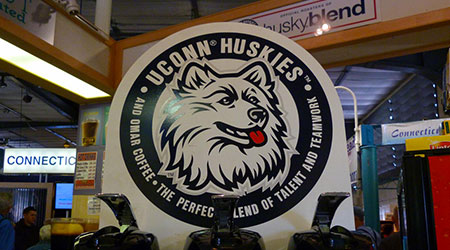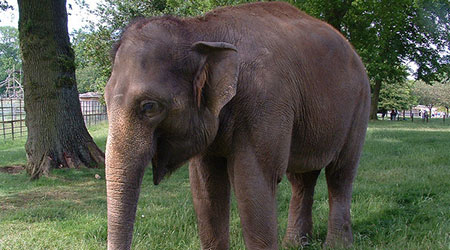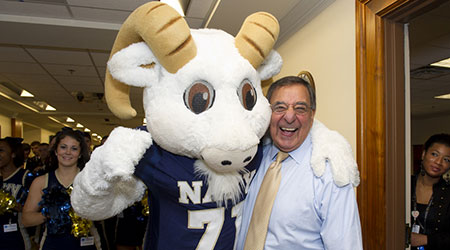10 College Mascots With the Most Interesting Histories
If we’ve learned anything from Batman, it’s that people need a powerful symbol to unite behind. For colleges, we call this symbol the mascot, a revered creature that brings good fortune and the promise of athletic victory. Many colleges only settled on a mascot in the last couple decades, and some have no mascot at all. But several schools boast a long and colorful history of their mascot’s origins, exploits, and line of successors. From Stanford to New Haven, here are the 10 college mascots with the most interesting histories.
- Handsome Dan, Yale University:
With 17 iterations over 120 years, it’s no surprise Yale’s revered English bulldog has a storied history. Handsome Dan I was bought from a blacksmith for $5 in 1889 and would go on to win hundreds of prizes, including first at Westminster. Dan II was kidnapped by Harvard students, with a taunting photo of him happily licking a hamburger at the foot of the John Harvard statue sent back to Yale. Dan III was terrified of crowds and was quickly retired. Depending on whom you ask, Handsome Dan VI died from fear of fireworks at the Harvard game or from the shame of losing to both Harvard and Princeton in the same year. When asked if he would rather join Harvard or die, Handsome Dan XIII would roll over and play dead. - War Eagle, Auburn University:
Though Aubie the Tiger is the official Auburn mascot, this unofficial “symbol of the proud Auburn spirit” has a much more interesting history. In fact, it has about five of them. The most popular origin story holds that the first War Eagle was a pet that an old Civil War vet had rescued on the battlefield. Having brought it to an 1892 football game, the bird suddenly took flight and circled over the field, igniting the fans and inspiring the Tigers to victory just before crashing to the field, dead. Another version holds that the cry of “War Eagle” was the result of fans mimicking a misheard Auburn quarterback’s play call. Whatever the truth, the War Eagle Flight is one of the best game-day traditions in college sports. - The Biliken, Saint Louis University:
The Biliken is easily one of the most unique mascots in college athletics. The mythical creature was created by a schoolteacher in 1908, who borrowed heavily from Asian gods like Buddha in the design. She is thought to have seen the word “biliken” in a poem. As for how the troll-like figure got tied to SLU, the stories vary but all seem to center around football coach John Bender’s similar facial appearance to a biliken. A drugstore owner, a cartoonist, and a sportswriter all have claims to anointing Bender with the nickname. Whatever the case, by the early 1910’s the football team had come to be known as “Bender’s Bilikens,” and the name stuck. - The Stanford Tree, Stanford University:
The school website is quick to point out that Stanford has no official mascot. But everyone in the country knows the truth: Stanford has a mascot, and it’s one of the greats. In the ’70s and early ’80s, the student body debated what the official mascot should be. They settled on the Robber Barons in 1975, but the administration refused to adopt the name. So the band tested out some other mascot ideas like the French Fry and the Steaming Manhole. But the one that stuck was an outrageous Redwood tree costume. Once a role filled by band directors’ girlfriends, the job of being the Tree became so highly coveted students would let themselves be shot or lit on fire in tryouts. Comfort with pain is pretty much a necessary skill for the mascot: he’s been known to get drunk and mix it up with other mascots. - Mike the Tiger, LSU:
When today’s opponents of LSU’s football team head to the locker room, they have to run past Mike, the live Bengal tiger and school mascot. This Mike is actually Mike VI; together, his predecessors have a pretty colorful history. Mike I was originally named “Sheik,” and even years after coming to LSU in 1936 (welcomed by a student strike in his honor), he would roar when his trainer would call the old name. To this day, rumors swirl that Mike II died mid-season during a losing streak and was secretly replaced. Coach Bear Bryant once lectured Mike III’s trainer after the tiger unnerved Bryant’s Alabama team by growling near them. Mike IV was cut loose from his cage in 1981 by pranksters and had to be shot with three tranquilizers before being subdued. - Reveille, Texas A&M University:
Few colleges are as fanatical about their mascot as the Texas Aggies. The first Reveille was a stray dog a few Corps of Cadets members hit with their car and smuggled home in 1931. The next morning at the bugle call, the dog started barking, revealing their illegal pet but also earning her the name Reveille. She would be made a five-star Cadet General by the U.S. Army before dying and being given a military funeral at the 50-yard-line of Kyle Field. The tradition of the handler taking the dog to all his classes began with Reveille II. Reveille VI (a Collie like all Reveilles since Reveille III) had the distinction of being stolen for a week by a UT fan and taken to Austin, and later attended President George W. Bush’s inaugural ball in Washington, D.C. in 2000. - Jonathan the Husky, University of Connecticut:
The 13 (or 12?) live mascots at UC have had a rough go since being selected to represent the school in 1934. The very first Jonathan — named for Gov. Jonathan Trumbull of the Revolutionary War era — was run over by a car just a day after being named. Jonathan VI met the same fate, just two months after hitting campus in 1964. Jonathan IX (also known as Jonathan X due to a numbering discrepancy) was also killed by a car, and Jonathan VII was nearly sold in 1970 as the students felt he “represented the establishment.” But there have also been good moments, like when Jonathan II chased Brown’s live bear up a tree, and Jonathan IV grabbed Yale’s Handsome Dan by the nose in their first meeting. - Jumbo the Elephant, Tufts University:
Tufts’ athletic program doesn’t make a lot of noise, but while it was alive the school’s mascot surely did. Jumbo the elephant was a gift to the school from P.T. Barnum, who donated the giant stuffed creature in 1885 after it was hit by a train. For 86 years, the school’s beloved mascot was a campus landmark. Students would pull Jumbo’s tail or stuff pennies in his trunk for luck. But Jumbo’s luck ran out (again) in 1975, when Barnum Hall burned down with the elephant inside, leaving only a tail and some ashes that were collected in a used jar of Peter Pan peanut butter. Today the jar is ceremonially passed down between athletic directors, and “Jumbo” is just a guy in a suit. - Bill the Goat, U.S. Naval Academy:
Legend has it that the inspiration for having a goat for a mascot comes from a young midshipman donning the skin of a beloved goat at halftime of a football game and parading around the sidelines. The first live goat debuted in 1893, and by 1914 Navy was on its sixth goat, which was mean enough to earn the nickname “Satan.” He was the only goat to escape a livestock quarantine that year, so that he could attend the Army-Navy game. But after Navy lost the game, an ad was placed for a new goat, specifically “the meanest and fiercest goat possible.” Bills were commonly targeted for kidnapping by other schools, and both Bill XVI and Bill XVII died of accidental poisoning from weed killer. - Demon Deacon, Wake Forest University:
The sports teams were dubbed the “Demon Deacons” in 1922, but it would be nearly 20 years before some frat brothers decided the school needed a dignified mascot to go with the name. So student Jack Baldwin dressed up in a tux with tails, a top hat, and an umbrella, and led the football team onto the field riding a Carolina ram. Successive Deacons set themselves apart in the record books in different ways. The 1957 Deacon was the first to climb the goalposts, while the Class of ’60 Deacon originated the response to Auburn’s “War Eagle,” “Turkey buzzard!” In 1981, the Deacon even officiated a wedding between fellow mascots Mr. and Ms. Wuf of NC State.

